Following a four-year COVID-imposed absence, the International Manufacturing Technology Show (IMTS) has returned, with a much more 3D printing-heavy line-up than before.
Usually held every two years, IMTS isn’t just about 3D printing, it sees manufacturers that specialize in processes ranging from CNC machining to injection molding meet to share best practice, unveil new products and identify cross-industry trends.
That said, this year’s show features 83 3D printing exhibitors, more than twice the amount that took part in 2018, and many more are showcasing related software, services, scanning and measurement products at their booths. With this in mind, 3D Printing Industry is on the scene in Chicago all week, to help readers keep up with goings-on at IMTS, and cover the biggest stories live from the show floor.
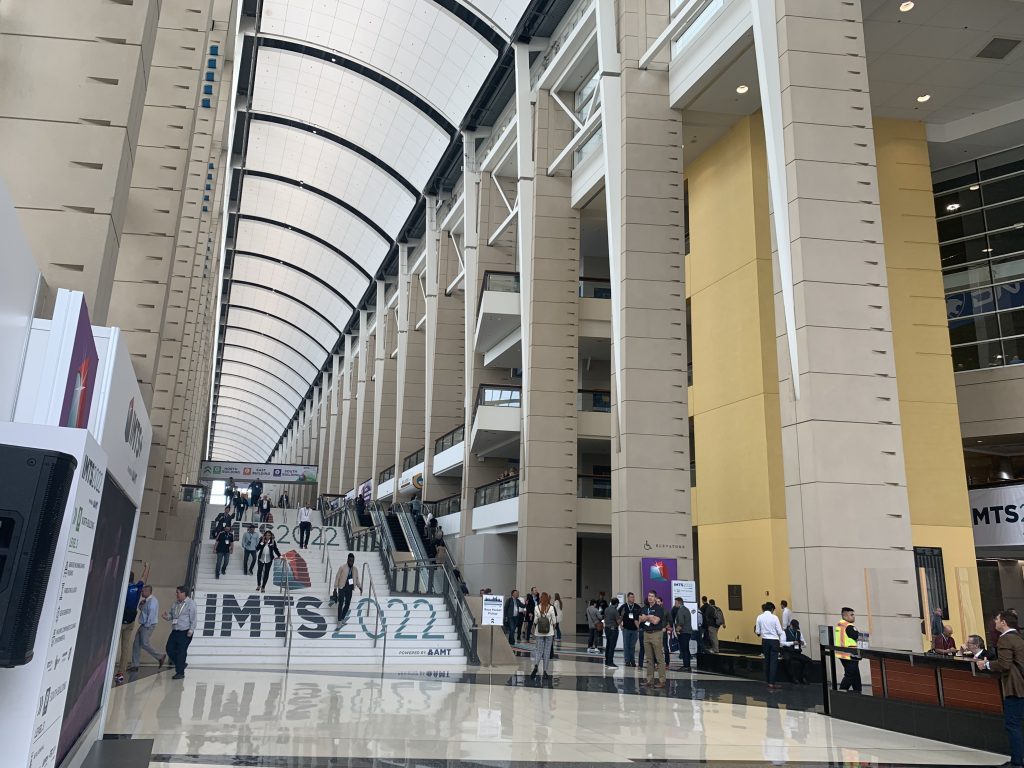
A metal 3D printing extravaganza
Those that attended IMTS’ main stage early-on may well have missed one of the event’s most important launches, with the HP Metal Jet S100 3D printer being unveiled during its opening keynote. Introduced to a large audience in the West Building at McCormick Place, the 430 x 309 x 200 mm is designed to work with Metal Injection Molding (MIM) materials.
When asked about the benefits of this at the launch, Tim Weber, the man put in charge of developing Metal Jet back in 2018, said it enabled the creation of “20-40 times cheaper” parts than injection molded equivalents.
On the subject of the machine’s stainless steel 316L and 17-4PH compatibility, Weber added that HP is currently qualifying more materials, thus these only represent its launch offering. Following its unveiling, the firm has confirmed that its much-anticipated system is now available to order in Western Europe, the US and China, with would-be adopters encouraged to reach out.
Elsewhere on the showfloor, Desktop Metal was live-demoing its Figur G15 3D printer throughout the day. The new digital sheet metal forming machine features a software-driven ceramic toolhead, which enables the fabrication of parts up 1600 x 1200 mm in size, with a draw depth of as much as 400 mm.
What’s more, the system does so without needing dies, tools or molds, in a way that could yield savings for manufacturers across sectors, with the firm displaying consumer, automotive and architectural parts at its booth.
“The whole idea is eliminating all the tooling that you normally need to create complex 3D sheet metal parts,” explained Figur Founder Justin Nardone. “The dies that this is replacing, if you were to make them as one-off, would cost you 10-20 grand. The whole machine is just under a half-million dollars, and with it, you could print some parts that cost even more.”
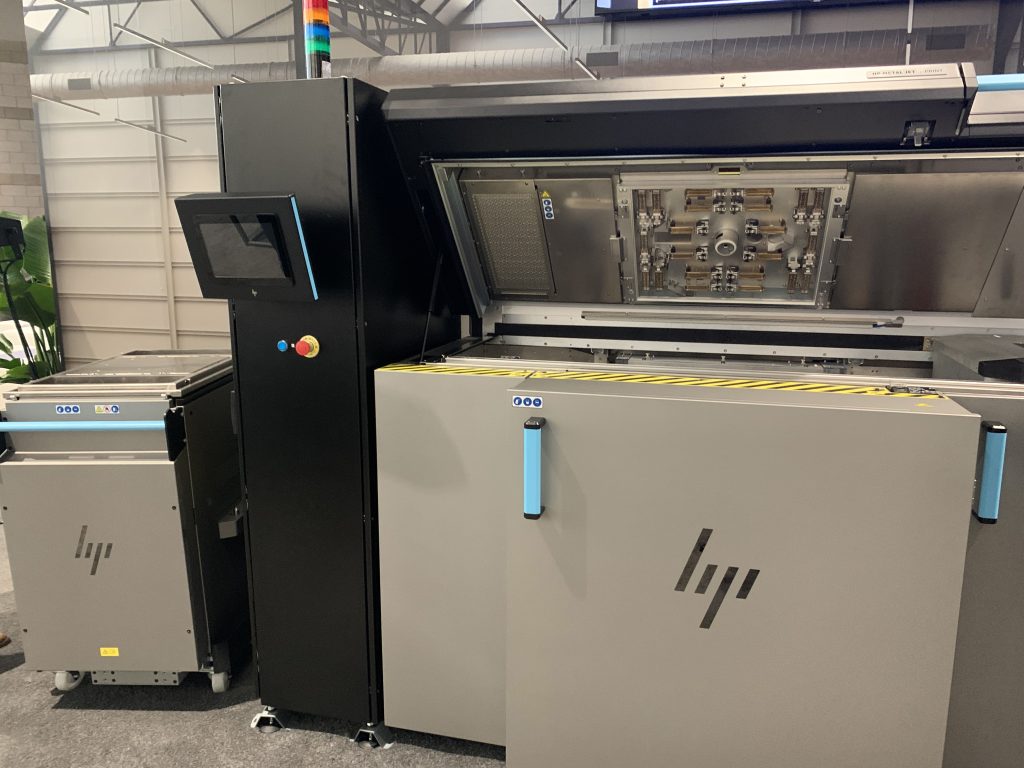
On the subject of tooling, Mantle debuted its P-200 3D printer and F-200 furnace at this year’s IMTS, which in tandem, are designed to enable the production of metal tool molds. While the systems themselves were absent from its booth, the firm’s team explained that the P-200 works by depositing metal pastes layer-by-layer into molds, before machining these into parts with very high tolerances.
In one such case, Hannah Coombs, Marketing Manager at Mantle partner Westminster Tool, explained that it had a glass-filled material developer approach it over medical device R&D. While the client could have used aluminum, she said “it just wouldn’t have had the rigidity” for this use-case, whereas using Mantle printing allowed them to develop a final product in just three weeks.
Lastly, on the metal 3D printing front, Xact Metal was exhibiting just a week after unveiling the XM300G Series 3D printer. Fitted with a larger 300 x 300 x 350 mm build volume than its predecessors, and configurable with up to six lasers, the system could provide the firm’s traditional education and research user base with room to expand into new, larger or higher throughput applications.
Unfortunately, like the Mantle P-200, the Xact Metal XM300G wasn’t on display at the show. However, the Xact Metal team did reveal that their machine is currently with beta customers, ahead of a projected 2023 launch.
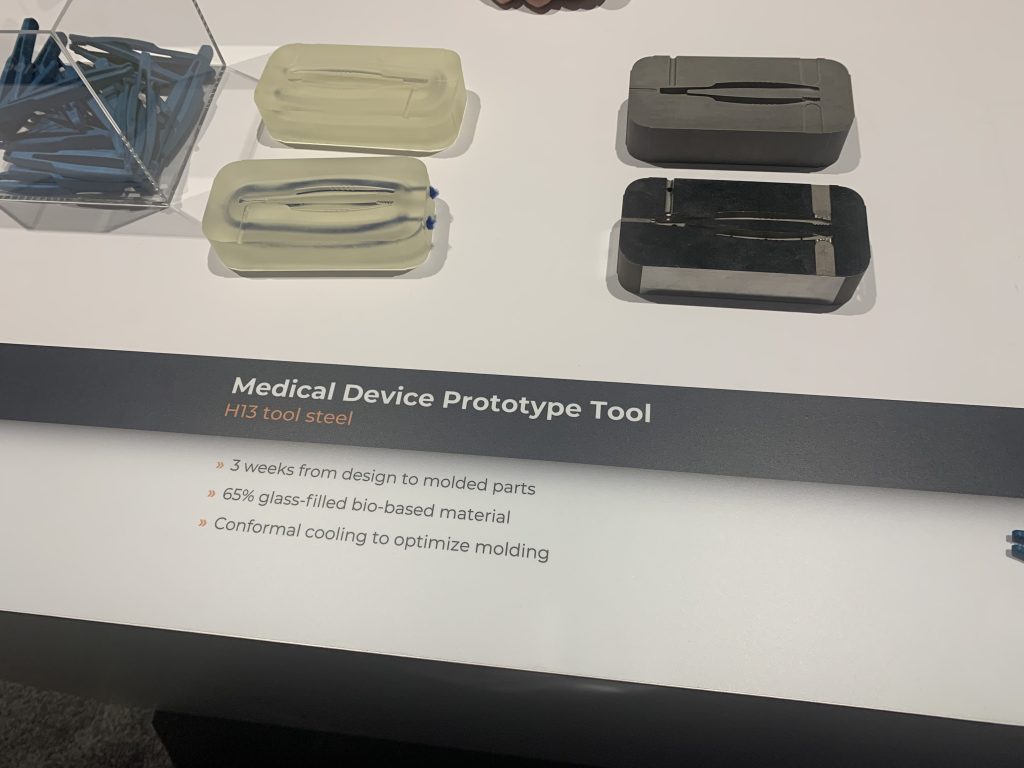
Application-driven material R&D
One of the early initial trends to pop-up on the showfloor was the qualification of 3D printing materials to address the very specific applications of clients. Alongside its new Figure 4 Tough Clear and DuraForm PAx Black materials, 3D Systems showcased Certified CuNi30 (A). Developed specifically to address the needs of Newport News, the low-conductive copper alloy features high strength and ductility, as well as low corrosion against sea water.
With the material proving ideal for the Huntington Ingalls division’s maritime-focused business, 3D Systems is now aiming to make it available to general customers in Q4 2022, in a move that could drive oil and gas demand.
According to Joe Dopkowski, an Application Engineer at 3D Systems, the alloy could be ideal for maritime clients with a failed fitting that “need a quick, easy replacement which still has corrosion-resistant properties.” Dopkowski added that he continues to weigh up demand for the material at oil and gas events as well, but as there “aren’t any regulations” for 3D printing such parts, potential customers are saying “they don’t know what the implications are.”
Another Desktop Metal subsidiary, ETEC, also announced the validation of new materials for its Xtreme 8K 3D printer in the run-up to IMTS, in the form of two Henkel Loctite resins. Using one of these, the newly-qualified Loctite 3D IND405 HDT50, ETEC Senior Product Developer Kial Gramley explained how users can better realize the potential of the “world’s-largest production DLP 3D printer.”
“This is a polypropylene-like material, It’s one of Henkel Loctite’s best-selling,” said Gramley. “The only difference now is it’s available with much larger parts. So now you can bring in bigger parts, you can print bigger batch sizes, you can create with higher throughputs and that is probably the main difference and benefit.”
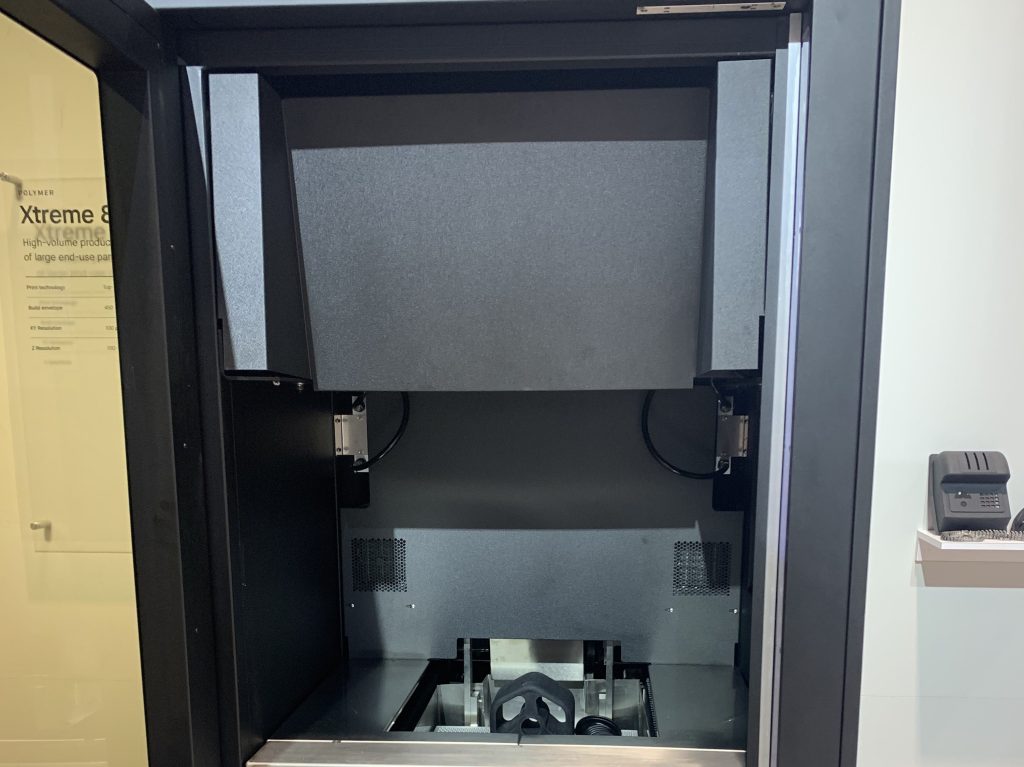
An emerging eco-friendly trend?
Already, on day one of the event, another of the industry’s emerging trends was also clear to see on the show floor: 3D printing that aids sustainability. Ahead of IMTS, 6K Additive announced that it had struck a deal to supply Incodema3D with materials produced via its UniMelt plasma microwave powder production system. Using the resulting alloys, Incodema3D’s Director of Business Development James Hockey, revealed its plans to address some high-profile clientele.
“Aerospace and defense is where we work, 6K is a partner of ours… and we’re looking at the entire lifecycle of powder, and the reclamation of scrap,” said Hockey. “We’re focused on giving that to our customers, giving the Lockheed Martins, the Northrops and the Raytheons that opportunity to keep things as green as possible, and to pass those savings on.”
German 3D printer OEM EOS, meanwhile, displayed the model of a linear nuclear fusion reactor in the middle of its booth. Currently being developed by TAE Technologies, the reactor in question is set to be built with thermally-regulating EOS-printed parts that help optimize its performance and power output. With the initial system expected to be functional by early-2023, the firm is already planning to run a new, zero-waste version by 2050.
At the booth, EOS Senior Application Developer Spencer Thompson explained that he’s “doing a lot of research into the pillars of sustainable technology” on behalf of EOS, including hydrogen, carbon capture and nuclear fusion.
Given that in each one of these technologies, “thermal management is the common thread,” Thompson added that he anticipates “higher [sustainable] power demands and more extreme environments” will see “additive [manufacturing] kind of ‘slide right in’ as the [manufacturing] technology that you have to use.”
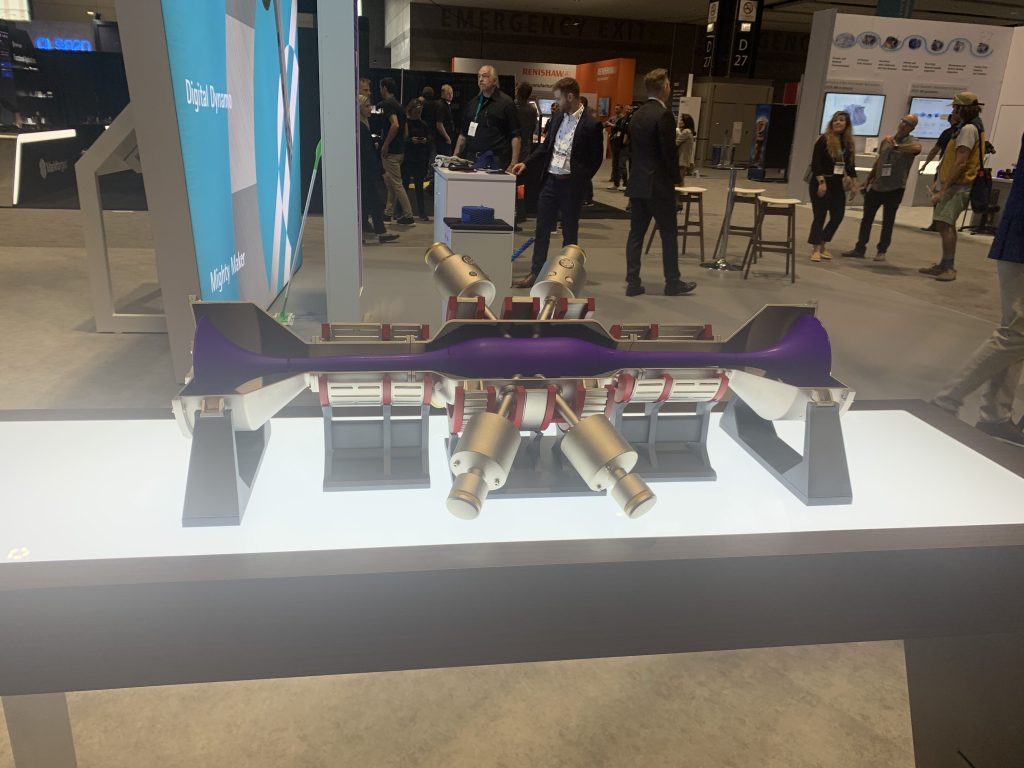
To stay up to date with the latest 3D printing news, don’t forget to subscribe to the 3D Printing Industry newsletter or follow us on Twitter or liking our page on Facebook.
While you’re here, why not subscribe to our Youtube channel? featuring discussion, debriefs, video shorts and webinar replays.
Are you looking for a job in the additive manufacturing industry? Visit 3D Printing Jobs for a selection of roles in the industry.
Featured image shows the staircase at the entrance to McCormick Place, home of IMTS 2022. Photo by Paul Hanaphy.



